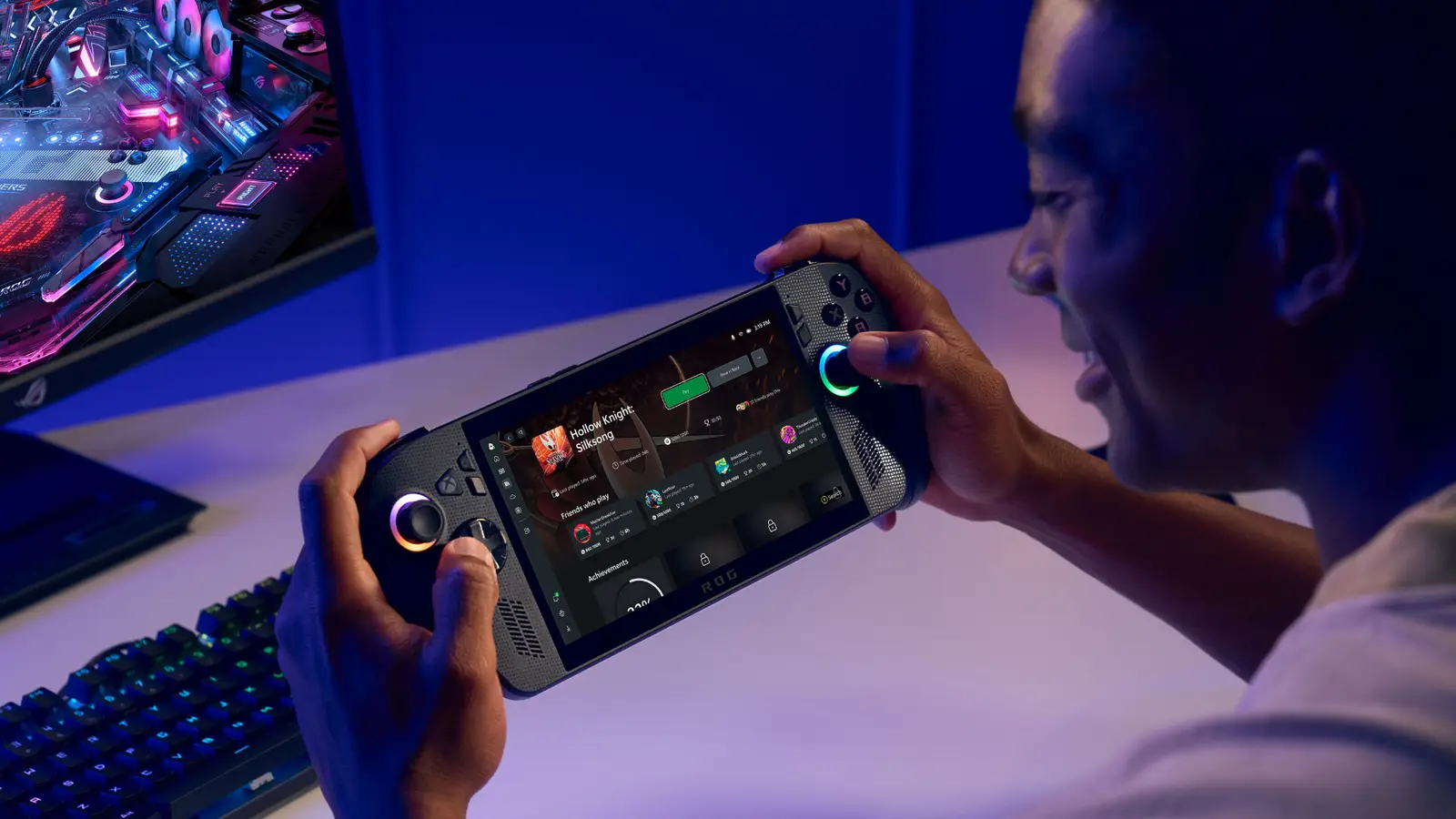
The Asus ROG Xbox Ally and ROG Xbox Ally X handheld gaming PCs are expected to change the Xbox brand, expanding Microsoft’s console line into the handheld space. With the Xbox Ally and Ally X landing just next month, the hype for the new Asus and Xbox co-branded devices is pretty high.
The Xbox Ally X is going to be one of the first systems featuring AMD’s Ryzen Z2 Extreme APU, while the Xbox Ally is a more entry-level configuration featuring the new Ryzen Z2 A processor. While the Xbox Ally X will have some serious power to its Zen 5 APU, the Ryzen Z2 A is the most budget-friendly processor in AMD’s newest generation. So the Xbox Ally is going to have a hard time competing with other handhelds on the market.
But there is still hope for the entry-level Xbox handheld. And it lies in AMD’s FSR 4.
Asus ROG Xbox Ally hardware limitations
The Xbox Ally will be outperformed by the standard ROG Ally
The Xbox Ally features a Ryzen Z2 A APU, which is even more budget than the underwhelming Ryzen Z2 Go, which was partially responsible for the lukewarm reception of the Windows 11 version of the Lenovo Legion Go S compared to its SteamOS counterpart. The Ryzen Z2 Go is a Zen 3 APU with a 4-core CPU and 12 RDNA 2 graphics cores. The Z2 Go also has a configurable TDP of 15–30W.
The Ryzen Z2 A processor is a Zen 2 APU with a 4-core CPU, 8 RNDA 2 graphics cores, and a configurable TDP of 6–20W. So it’s rather underpowered compared to other handheld chips on the market, and appears to be aimed primarily at 720p gaming. In fact, despite the new name, the Ryzen Z2 A looks to be the same “Van Gogh” APU Valve’s Steam Deck has been rocking since early 2022, though with a slight clock speed and TDP increase.
While the Steam Deck still holds its own in gaming performance stakes, a lot of that is down to its lightweight operating system and game optimization. The Xbox Ally, on the other hand, will be running a slimmed-down down of Windows 11, but if it’s got all of Microsoft’s additional OS features hidden behind a handheld-centric overlay, that could leave the Xbox Ally under-performing compared to the Steam Deck, which is 3-year-old hardware at this point.
AMD’s FSR 4 could be the solution
Though, as usual, there is a catch
AMD’s Fidelity FX Super Resolution (FSR) is a graphics upscaling technology created by AMD for its own hardware, but FSR is hardware-agnostic. So you can use FSR even with an Nvidia or Intel GPU.
The Xbox Ally will get access to AMD’s FSR 3 and Fluid Motion Frames technology, with AFMF 2 being the latest iteration of AMD’s frame-gen technology. These should help boost the Xbox Ally’s performance, as they’ve proven to help the Steam Deck and Asus ROG Ally.
AMD does have a newer version of FSR, but right now, FSR 4 is limited to AMD’s RDNA 4 Radeon RX 9000 series GPUs, though a source code leak has allowed modders to compile FSR 4 and implement it in games for officially unsupported AMD cards. With that said, FSR 4 is expected to become officially available on additional hardware in the future. Whether that will launch with the ROG Xbox Ally or not is unknown for now.
In an official sense, we’ve seen FSR 4 at work on the new Radeon GPUs, and it closes the gap against Nvidia’s DLSS 4 platform. If FSR 4 can run as well on older hardware as it does on the RDNA 4 GPUs (and those aforementioned mods seem to suggest it does), it could make the Xbox Ally a serious contender for best gaming handheld.
You can get FSR 4 on older hardware
But it’s a bit rough
Thanks to that FSR 4 source code leak, you can do some tweaking to force FSR 4 to run on older GPUs; the initial workaround required Linux, which would void the benefits of getting the Xbox Ally. But there is a way to get FSR 4 on older hardware without needing to change your entire operating system, and that would let you put FSR 4 on the Xbox Ally without changing operating systems if it doesn’t launch with it.
Unfortunately, so far, community efforts to run FSR 4 on older hardware have shown an improvement in image quality, with little improvement in performance. Some games, however, experience a performance hit with FSR 4 compared to FSR 3. Some developers seem to think that it’s because of the block floating-point difference between the GPU generations (FP8 vs FP16), which makes the AI-powered upscaling and frame generation function less efficient on the older hardware.
AMD could still turn FSR 4 around
There’s still hope
These early tests are conducted with a version of FSR 4 that is not compatible with older hardware. Depending on what tweaks AMD makes to the upscaler when releasing it on older RDNA GPUs and non-AMD GPUs, it could still provide some serious performance uplift, which is exactly what the Xbox Ally needs.
Right now, the Xbox Ally appears to just be a Microsoft copy of the Steam Deck that will likely perform worse than the original. If FSR 4 can run just that much better than FSR 3, it could go a long way to giving the Xbox Ally its own identity in the handheld market. Because at the moment, it’s eclipsed by the standard ROG Ally and Steam Deck, and by the more powerful Xbox Ally X.
Of course, if FSR 4 becomes available on the Xbox Ally, it’ll also give similar uplift to the Steam Deck. But it could help the Windows version at least level the playing field.



